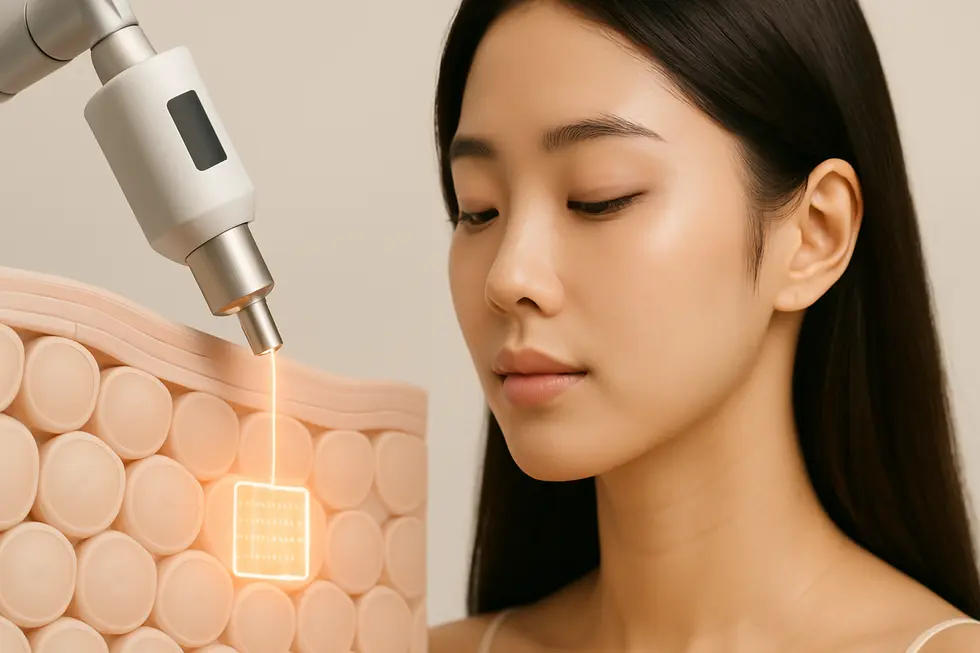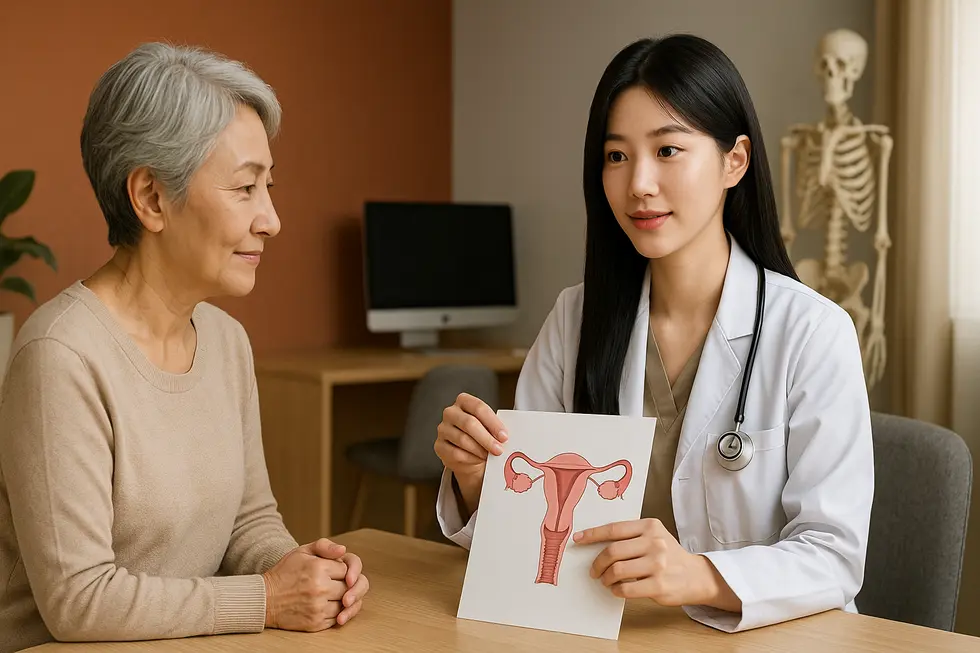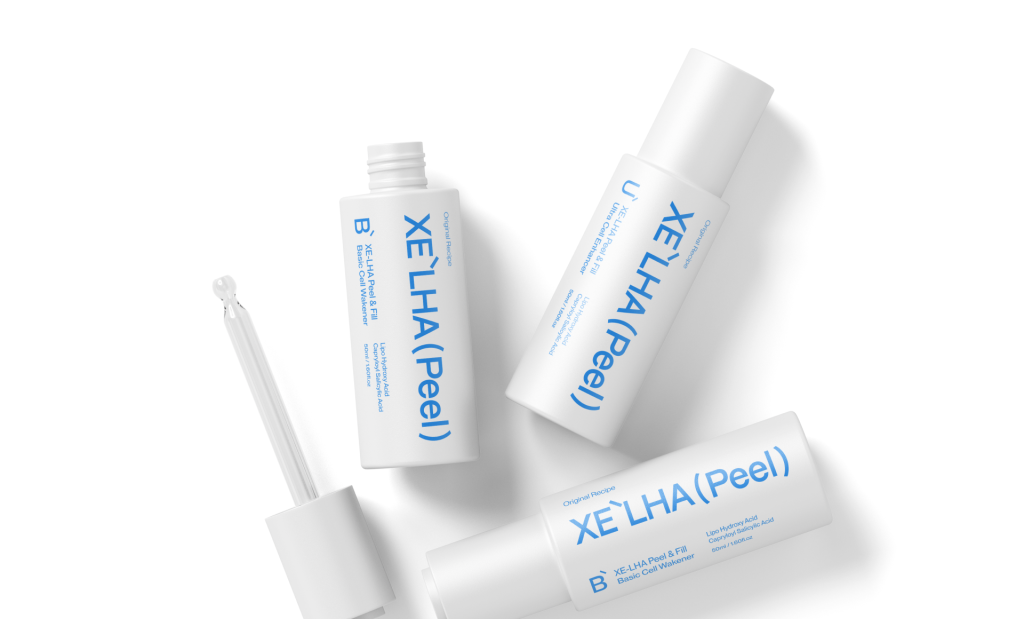
Navigating the changes that come with menopause can be, well, a journey. While we talk openly about hot flashes and mood swings, other, more intimate changes often get left out of the conversation. I’m talking about issues like vaginal dryness, itching, and even painful intercourse. If this sounds familiar, please know you’re not alone, and it’s perfectly okay to seek solutions. It’s a medical condition, and there are modern treatments available. 😊
Today, I want to talk about a groundbreaking treatment I’ve researched extensively: the MonaLisa Touch. It’s a non-hormonal, minimally invasive option that has brought relief to so many women. Let’s dive in and see what it’s all about!
Contents
What Exactly is MonaLisa Touch? 🤔
At its core, MonaLisa Touch is a medical procedure designed to treat the symptoms of Genitourinary Syndrome of Menopause (GSM), more commonly known as vaginal atrophy. These symptoms are often a result of decreased estrogen levels, which can cause the vaginal walls to become thinner, drier, and less elastic.
The treatment uses a special type of fractional CO2 laser, specifically designed to work on the delicate tissues of the vaginal wall. Think of it as a way to kickstart the body’s natural healing processes. It’s not a cosmetic procedure; it’s a functional one aimed at restoring vaginal health and alleviating uncomfortable symptoms.
One of the biggest advantages of MonaLisa Touch is that it’s a non-hormonal treatment. This makes it an excellent option for women who cannot or prefer not to use estrogen therapy, such as breast cancer survivors.
How Does It Actually Work? 🔬
This is where the science gets really interesting! The MonaLisa Touch laser delivers gentle energy to the vaginal wall, creating tiny, painless micro-injuries in the tissue. These are so small you won’t even feel them, but they are significant enough to signal your body to start its healing and regeneration process.
This stimulation triggers a few key responses:
- Collagen Production: The body rushes to heal the micro-injuries by producing new, strong collagen, which is the main structural protein in your skin and connective tissues. This helps thicken the vaginal lining and restore its elasticity.
- Elastin and Hyaluronic Acid: The process also encourages the formation of elastin (for flexibility) and hyaluronic acid (for hydration).
- Improved Blood Flow: The laser promotes the growth of new blood vessels (neovascularization), which improves circulation and nutrient supply to the area, further enhancing tissue health and lubrication.
Essentially, the MonaLisa Touch procedure revitalizes the vaginal mucosa, making it more hydrated, supple, and resilient—much like it was before menopause.
📝 Example Analogy
Think of it like aerating a lawn. You create tiny holes to allow water, nutrients, and air to penetrate deeper, encouraging new, healthy grass to grow. The MonaLisa Touch works similarly, creating micro-channels that prompt the body to rebuild healthier, more functional tissue from within.

The Procedure: What to Expect 👩⚕️
The thought of a laser procedure can sound intimidating, but it’s remarkably quick and straightforward. Here’s a typical breakdown of the experience:
- Consultation: First, you’ll have a thorough consultation with a qualified doctor to ensure you’re a good candidate.
- The Treatment: The procedure itself is performed in-office and typically takes less than 5 minutes. A small probe is gently inserted into the vagina, and the laser energy is delivered in pulses. Most women report feeling a gentle vibration, but no pain. Anesthesia is not required.
- Treatment Plan: A full course usually consists of 3 treatments spaced about 4-6 weeks apart. This allows the tissue to fully regenerate between sessions.
- Aftercare: There’s virtually no downtime. Your doctor will likely advise you to avoid sexual activity and hot baths for a few days, but you can return to your normal routine immediately.
While MonaLisa Touch is very safe, it’s crucial to have it performed by a board-certified gynecologist or urologist who is specifically trained and experienced with the device. Always verify your provider’s credentials.
Who is an Ideal Candidate? 🙋♀️
This treatment can be life-changing for many women. You might be a great candidate if you experience symptoms of GSM and fall into one of these groups:
| Ideal Candidate Group | Why It’s a Good Fit |
|---|---|
| Post-Menopausal Women | Directly addresses the root cause of vaginal atrophy due to natural aging and estrogen loss. |
| Breast Cancer Survivors | A safe, non-hormonal option for those who have undergone treatments like chemotherapy or are on hormone blockers. |
| Women with Induced Menopause | Effective for those who’ve had a hysterectomy or oophorectomy, leading to sudden menopausal symptoms. |
| Women Who Prefer Non-Hormonal Options | For anyone who has health risks associated with hormone therapy or simply prefers a different approach. |
📝 Summary: Key Takeaways
Let’s quickly recap what we’ve covered. The MonaLisa Touch is a powerful tool for women’s health!
- What It Is: A 5-minute, in-office fractional CO2 laser treatment for Genitourinary Syndrome of Menopause (GSM).
- How It Works: Stimulates the body’s natural production of collagen and elastin to restore vaginal tissue health, hydration, and function.
- Key Benefit: It’s a safe, effective, and non-hormonal alternative for treating symptoms like dryness, itching, and painful intercourse.
- The Process: Typically involves 3 sessions spaced 4-6 weeks apart, with no downtime. An annual maintenance treatment is often recommended.
MonaLisa Touch at a Glance
FAQ ❓
Taking control of your health at every stage of life is empowering. The MonaLisa Touch offers a real, science-backed solution for issues that have been silently affecting women for too long. If you’ve been struggling with these symptoms, I hope this information gives you a starting point for a conversation with your doctor. You deserve to feel comfortable and confident! 😊
This article is for informational purposes only and does not constitute medical advice. The information contained herein is not a substitute for professional medical advice, diagnosis, or treatment. Always seek the advice of your physician or other qualified health provider with any questions you may have regarding a medical condition.





